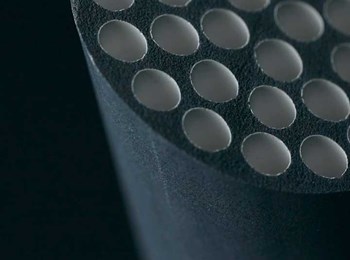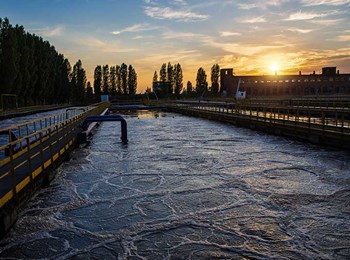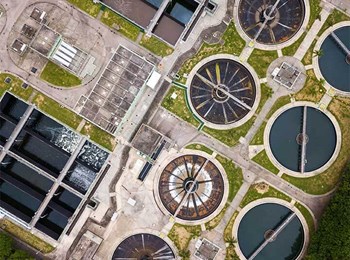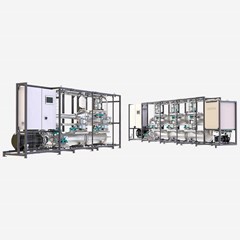Heavy metals in nature are an increasing global problem, threatening the environment and living organisms’ lives.
Heavy metals are chemical base elements that naturally appear in nature. We extract some heavy metals through mining and use them in industry. Heavy metals are led into nature by exhaust gases from waste incineration, by burning coal, or by industrial wastewater led into the environment, e.g., the metal surface treatment industry or mining industry.
The concentration of some types of heavy metals is significantly higher in nature than it would be without human impact. If living organisms like animals or humans are exposed to high amounts of heavy metals, it can cause serious health effects. Therefore, it is essential to decrease the emission of heavy metals into the environment, among others, by heavy metal removal in wastewater treatment. The increasing focus implies strict discharge limits and environmental regulations on heavy metal removal to accommodate the massive problem.
The processes for heavy metal removal in industrial wastewater include many different processes, such as chemical precipitation, adsorption, ion exchange, electrochemical deposition, and membrane filtration. Let us dive into these heavy metal removal techniques:
Chemical Precipitation
The most common process used for heavy metal removal is chemical precipitation. The primary parameter that improves heavy metal removal in wastewater in this technology is the adjustment of pH to the basic conditions. Lime and limestones are commonly employed precipitant agents due to their availability and low cost in most countries. Lime precipitation can be utilized to offer efficient treatment of the inorganic effluent with an appropriate metal concentration. However, chemical precipitation requires a significant number of chemicals to reduce metals and reach an acceptable level for discharge. It is possible to remove heavy metals in wastewater without using a large number of chemicals with other wastewater treatment methods.
Furthermore, it implies an expensive sludge production that requires further treatment. It is slow metal precipitation, and it has a poor settling of the aggregation of metal precipitates. It is worth mentioning that the long-term environmental impacts of sludge disposal are a potential issue.
Ion Exchange
Another method used in industry for heavy metal removal from effluent is ion exchange. An ion exchanger is a solid exchanging either cations or anions from the surrounding materials. Synthetic organic ion exchange resins are the most commonly used matrices for ion exchange. This method has a couple of disadvantages worth mentioning: The ion exchange heavy metal removal technique cannot handle concentrated metal solution as the matrix gets easily fouled by organics and other solids in the wastewater. More to the point, this method is nonselective and is highly sensitive to the pH of the solution.
Electrolytic recovery
This method, also called electro-winning, is one of many technologies used for wastewater treatment for heavy metal removal. This heavy metal removal technique utilizes electricity to pass through an aqueous metal-bearing solution containing a cathode plate and an insoluble anode. This implies that the positively charged metallic ions cling to the negatively charged cathodes leaving behind a metal residue that is recoverable. A noticeable disadvantage is that corrosion is a significant limiting factor. This means that electrodes frequently have to be replaced, causing considerable maintenance.
Adsorption
Adsorption is an alternative wastewater treatment method for heavy metal removal. Mainly, adsorption is a mass transfer process by which a substance is transferred from the liquid phase to the surface of a solid and becomes bound by physical and chemical interactions. Various low-cost adsorbents derived from agricultural waste, an industrial by-product, natural material, or modified biopolymers have recently been developed and applied to remove heavy metals in wastewater. Using adsorption for treating industrial wastewater can demand chemical modification to enhance its removal performance for heavy metal removal.
Membrane filtration
Membrane filtration has received extensive attention, efficiently removing suspended solids, organic compounds, and inorganic contaminants such as heavy metals in wastewater. Membrane filtration exists in various types depending on the size of the particle that can be retained. Furthermore, membranes can be produced by polymeric material or ceramic material such as silicon carbide. The silicon carbide ceramic membranes are ideal for heavy metal removal because they are extremely robust, contributing to thermal and chemical strength, making them perfect for the harsh environments in which you often find heavy metals in wastewater.
Ceramic membranes contribute to low energy consumption, capacity, and a small footprint. Furthermore, membrane filtration does not demand high amounts of chemicals to enhance the heavy metal removal performance, and they have low fouling.




